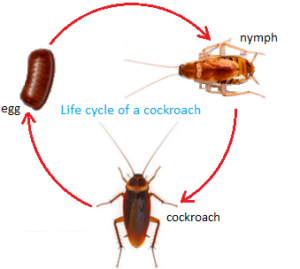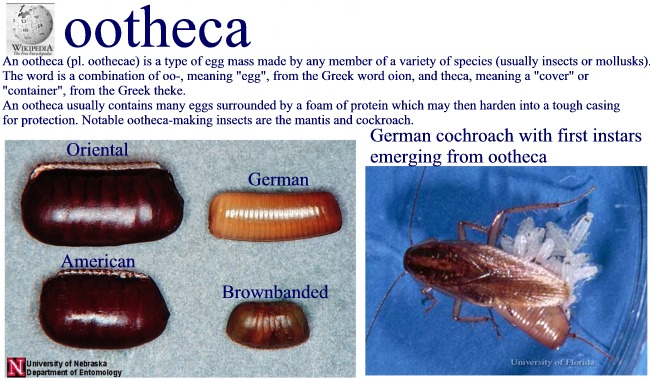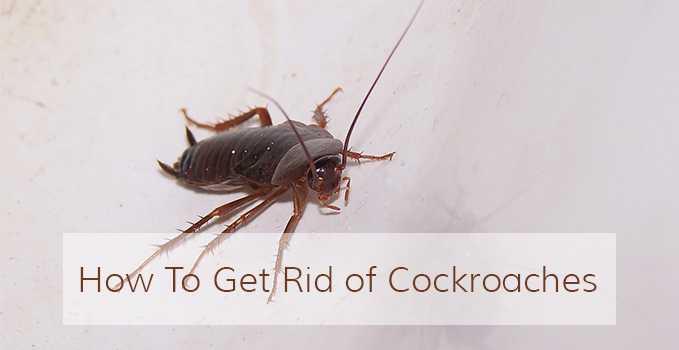
Roaches are a common problem in a lot of areas all over the country—both in urban and suburban settings. They live with us inside our homes, contaminate our common household items, and spread dangerous diseases such as salmonella and polio. Sometimes, even when we keep our houses clean, they still manage to infest our spaces and breed within our homes.
If you’re at a loss as to why roaches are infesting your home despite your obsessive house-cleaning routine, you might find the reason in this guide. Here, you’ll learn how to identify roaches, what attracts roaches to your house, and how to get rid of roaches once and for all. At the end of this guide, you’ll also find quality products that can help you remove these pests from your home.
Contents
Identifying Roaches
You can’t solve the problem if you don’t know how to identify the type of roach that you’re dealing with. There are different types of common household cockroaches that might be infesting your property, and understanding the depth and scope of the problem involves recognizing which type of cockroach is in your home.
At the same time, roaches are often mistaken with other types of insects. These insects may require a different approach of extermination, so you have to be able to differentiate these insects from one another.
What are cockroaches?
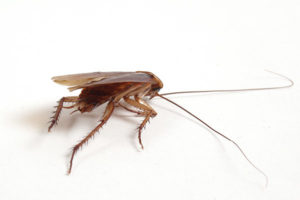 The first question that you have to ask yourself is: What are cockroaches? If you aren’t sure what the answer to this question is, a little biology is a good start.
The first question that you have to ask yourself is: What are cockroaches? If you aren’t sure what the answer to this question is, a little biology is a good start.
Cockroaches are insects that belong to the order Blattodea, an order that they share with termites. All over the world, there are about 4,600 species of cockroaches that have been discovered by man. About 30 of these species live in and infest human habitats. Scientists believe that cockroaches have existed since about 320 million years ago, during the Carboniferous period of geological time.
The body of a cockroach is divided into three parts—the head, the thorax and the abdomen. They also have a pair of antennae on their heads and wings on their backs. While most species of cockroaches have wings, not all of them use this part of their body to fly.
Most cockroaches are quiet. You’ll only hear a soft chirping or fluttering sound when they’re moving around. Their quietness allows them to stay hidden from sight although rare species (like that from Madagascar) can make loud hissing noises!
On certain occasions, a cockroach may emit a putrid smell, which comes from a type of acid in their body, called oleic acid. This acid produces the smell as a way to protect the creature from harm. Scientists from McMaster University in Ontario, Canada believe that cockroaches produce this smell when they face threatening forces in nature. When a cockroach leaves this scent in a specific spot, the smell allows it to avoid this place in the future.
Cockroaches are usually not aggressive. Unless threatened, they will not bite or attack. They’re usually just running away in search of places to hide. At the same time, most species of cockroaches are omnivores. They will eat meat, but they will not seek a human for food. Nonetheless, they may bite you if you come across as a threat. When they bite, they will most likely aim for your hands, feet or eye.
Life Cycle of Cockroaches
The life cycle of cockroaches involves three stages: the egg stage, the nymph stage, and the adult stage.
Source: First-Learn.com
Egg Stage
An adult female cockroach produces a resilient egg cage called an ootheca, which protects her mass of eggs until they are ready to hatch. The ootheca (or oothecae, if there are many) is protected by a certain protein substance that makes it hard and strong while the cockroach eggs are growing inside of it.
Source: chamownersweb.net
Different species of cockroaches have different-looking oothecae. For example, the American cockroach has a dark brown ootheca that is usually around 8 millimeters long. It may contain up to about 15 embryos inside of it, which will then hatch in about 24 to 38 days. In a lifetime, female American cockroaches can lay up to about 90 oothecae, or about 1350 baby cockroaches.
Meanwhile, the Oriental cockroach has a dark reddish-brown ootheca that usually measures from 8 to 10 millimeters long. It may contain up to about 16 embryos inside of it. In a lifetime, a female Oriental cockroach can lay up to 18 oothecae, which will hatch up to about 288 baby cockroaches.
The German cockroach, on the other hand, has a brown-colored ootheca that is usually from 6 to 9 millimeters long. Inside each ootheca, there can be up to about 50 embryos waiting to hatch. A female German cockroach can only produce 4 to 8 oothecae in a lifetime, or about 200 to 400 baby cockroaches.
Lastly, the brown-banded cockroach has an ootheca that looks a lot like that of the Oriental. However, its smaller ootheca is more of a light reddish-brown color that is usually 5 millimeters long. Each female brown-banded cockroach can lay up to 20 oothecae in a lifetime, and each ootheca can contain 10 to 18 embryos inside. This means that a single female brown-banded cockroach can give life to about 200 to 360 baby cockroaches in its life.
Nymph Stage
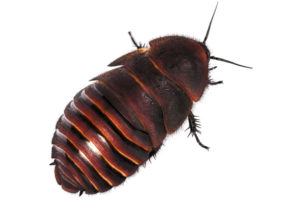 The nymph stage begins after the eggs have hatched and the ootheca has broken. The creature that comes out of the ootheca is called a nymph. Right after hatching, the little nymph has a bright white color, but it immediately grows, darkens and hardens within the next couple of hours. This process is called molting, and it may last from about a few weeks to a few months.
The nymph stage begins after the eggs have hatched and the ootheca has broken. The creature that comes out of the ootheca is called a nymph. Right after hatching, the little nymph has a bright white color, but it immediately grows, darkens and hardens within the next couple of hours. This process is called molting, and it may last from about a few weeks to a few months.
During the molting process, a nymph undergoes a series of progressive changes that completely transforms the physical appearance of the cockroach. Different types of cockroaches also have different-looking nymphs.
The American cockroach has nymphs that are of a grayish-brown color. As these nymphs mature, they turn to a more reddish-brown color.
The nymphs of the Oriental cockroach, meanwhile, look a lot like their adult counterparts. Their color ranges from a reddish-brown to a dark brown.
The German cockroach nymphs, on the other hand, are mostly uniformly dark, except for a small light-colored patch on their backs. As they undergo the second or third stages of the molting process, this patch will become lighter and more pronounced.
Finally, the brown-banded cockroach has nymphs that are mostly of the same color. They also have the identifying bands of their species across their bodies. These bands may range in color, from light gold to black.
Adult Stage
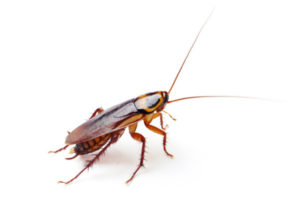 Depending on the species and the kind of environment where it lives, the average lifespan of an adult cockroach is one year. During their adulthood, they mate quickly and frequently, birthing up to hundreds of baby cockroaches in a single ootheca.
Depending on the species and the kind of environment where it lives, the average lifespan of an adult cockroach is one year. During their adulthood, they mate quickly and frequently, birthing up to hundreds of baby cockroaches in a single ootheca.
They are scavengers that will eat almost anything that they find. Because of these characteristics, they are terrible pests to have in the house. They carry and spread a wide range of diseases and, therefore, must be eliminated as soon as infestation is detected.
Water Bug vs Cockroach
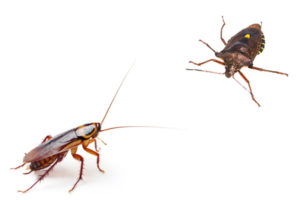 While the term “cockroach” refers to a specific order of insects, the term “water bug” is used to identify a broader category of insects that can thrive in and move on water. A few examples of water bugs include water striders, water spiders, and pond skaters.
While the term “cockroach” refers to a specific order of insects, the term “water bug” is used to identify a broader category of insects that can thrive in and move on water. A few examples of water bugs include water striders, water spiders, and pond skaters.
Cockroaches are not aquatic bugs, but they are very adaptable insects. They can survive wherever there is food available and, therefore, may be able to live on water. The Oriental cockroach, in particular, is a species of cockroach that can survive on water. However, unlike most water bugs, they use their bodies to stay afloat instead of using their legs as propellers.
Both water bugs and cockroaches are scavengers, but the former is more aggressive when it comes to hunting for food. Water bugs are also more solitary in nature, while cockroaches prefer to stay together in groups.
Roach vs Cockroach
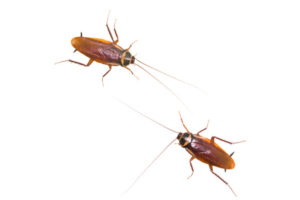 The term “cockroach” refers to a whole order of insects called Blattodea. There are about 4600 species of cockroaches known to man, and about 30 of them are found in human habitats. Meanwhile, the term “roach” usually refers to a specific type of cockroach called the American cockroach, or Periplaneta americana, which is the biggest species of cockroaches in the world. It is commonly mistaken as a water bug, although this particular type of cockroach isn’t aquatic.
The term “cockroach” refers to a whole order of insects called Blattodea. There are about 4600 species of cockroaches known to man, and about 30 of them are found in human habitats. Meanwhile, the term “roach” usually refers to a specific type of cockroach called the American cockroach, or Periplaneta americana, which is the biggest species of cockroaches in the world. It is commonly mistaken as a water bug, although this particular type of cockroach isn’t aquatic.
Other Bugs That Look Like Cockroaches But Are Not
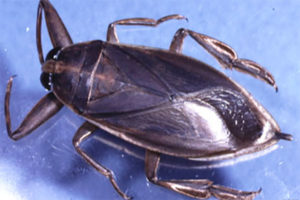 Cockroaches are not only mistaken for water bugs and roaches, they are also confused with other types of insects, like ground beetles and crickets.
Cockroaches are not only mistaken for water bugs and roaches, they are also confused with other types of insects, like ground beetles and crickets.
Because of its dark-colored exoskeleton, a lot of people think that ground beetles are also cockroaches. In reality, these two insects are a lot different from each other. For example, ground beetles are not carrier of deadly diseases. They do not pose danger to your pets, nor contaminate your house with bacteria and viruses. In general, they also do not destroy property like cockroaches do. Therefore, ground beetles are harmless insects.
Meanwhile, crickets are another kind of insect that people confuse with cockroaches. While most of us are familiar the sound that these insects make, a lot of us also don’t know what they look like. Hence, when they happen to appear inside our homes, we immediately think that they’re some kind of pests related to cockroaches.
The most noticeable difference in physical appearance between the cockroach and the cricket is the latter’s long hind legs. Crickets have long hind legs that they use to jump, covering bigger distances. Because they thrive in spaces where cockroaches usually live, they may also carry diseases, but that is a rare case.
What Attracts Roaches?
Sometimes, even a clean home experiences roach infestation. You might be wondering how this happens, and here is where you’re going to get your answers.
If you have a roach problem in your own house and you want to fix it, you should first identify the reason behind the infestation. Is your place clean or dirty? Do you have any spots in your house that are attracting roaches? In order to figure out the source of the problem, here is a list of 3 things that might be attracting roaches into your house.
Moisture
 Roaches are not aquatic insects, but they do like to hide in dark, warm, and damp crevices. Places in your house that you should check for moisture include the cupboard under the sink, leaking pipes and air-conditioning units, a clogged roof drain, and wet piles of leaves or grass in your backyard or garden.
Roaches are not aquatic insects, but they do like to hide in dark, warm, and damp crevices. Places in your house that you should check for moisture include the cupboard under the sink, leaking pipes and air-conditioning units, a clogged roof drain, and wet piles of leaves or grass in your backyard or garden.
If there’s any standing water in any part of your house, that’s a likely spot for roaches to lay their eggs as well. You can also look for moldy areas in your house. A mold build-up comes from moisture, which is a good living condition for these pests.
Cardboard Boxes
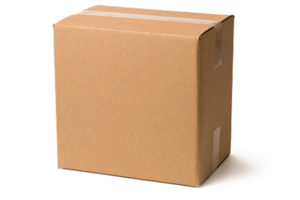 Roaches like to feed on fibrous organic materials such as cardboard and paper. Therefore, you should check cardboard storage boxes in your attic or basement for signs of infestation. These often undisturbed boxes are attractive places for roaches to nest.
Roaches like to feed on fibrous organic materials such as cardboard and paper. Therefore, you should check cardboard storage boxes in your attic or basement for signs of infestation. These often undisturbed boxes are attractive places for roaches to nest.
You may also want to consider switching these cardboard storage boxes to plastic bins. You will minimize the chances of roach infestation in your basement or attic (and consequently, your entire home) if you remove these possible food sources.
Strong Smells
 Roaches don’t just like pungent smells; they also love the sweet ones too. Any strong-smelling item in your house is a magnet for roaches. They will crowd around these items and slowly consume them as food. For example, a cinnamon-scented potpourri or an open bag of sweets, if left unattended, will attract roaches within a few hours. The same goes with a smelly bag of garbage or a heap of dirty clothes. These foul-smelling items will be an attractive spot for roaches to nest on and eat too.
Roaches don’t just like pungent smells; they also love the sweet ones too. Any strong-smelling item in your house is a magnet for roaches. They will crowd around these items and slowly consume them as food. For example, a cinnamon-scented potpourri or an open bag of sweets, if left unattended, will attract roaches within a few hours. The same goes with a smelly bag of garbage or a heap of dirty clothes. These foul-smelling items will be an attractive spot for roaches to nest on and eat too.
How To Get Rid of Roaches: What’s the Best Roach Killer?
Now that you’ve identified possible sources and problem areas around your house, you might be looking for actionable steps on how to get rid of roaches in your home. Well, there are a couple of methods with which you can attack the problem and solve it. These methods include sanitation, traps and baits, chemical repellents and natural repellents.
Sanitation
Cockroaches are natural scavengers and omnivores. They will eat almost anything that is available to them. And so, if you have a lot of clutter in your house, you will most likely encounter a roach infestation.
To avoid this problem, make sure to sanitize your home. You should clean as often as you can. You should avoid hoarding items that will only end up stored inside cardboard boxes. If possible, you should avoid cardboard boxes altogether; use plastic storage bins instead. You should always take the trash out whenever the garbage can is full. You should fix any broken or leaky pipes around your house. Lastly, mop up any spills or moisture that may seep inside crevices and corners in your home. Follow these steps and you’re one step closer to disinfecting your house.
Best Roach Traps and Bait
A lot of people choose to try roach traps and baits before deciding to use chemical repellents. This is because the use of traps and baits do not require homeowners to vacate the property while the extermination is happening.
There are also non-toxic options for traps and baits. With this type, your family and pets are safe from consuming lethal chemicals. Roach traps and baits will also save you some money. You won’t have to pay for a guy to come and handle the problem for you; with roach traps and baits, you can do the extermination on your own.
The effectiveness of roach traps and baits depends on the level of infestation within your home. If you have a full-scale problem, it might be better to fumigate the property entirely with a chemical repellent. Otherwise, roach traps and baits are a good way to get rid of the problem.
Combat Source Kill Max Roach Bait

I will recommend this bait for your small roach infestation problem. This roach bait contains 8 traps that you can place in different parts of the house. You don’t have to activate or plug anything; you just have to leave it and let it do its job. Within hours of placing these traps, you will find dead cockroaches waiting to be cleaned up.
12 DuPont Advion Cockroach Bait Arenas
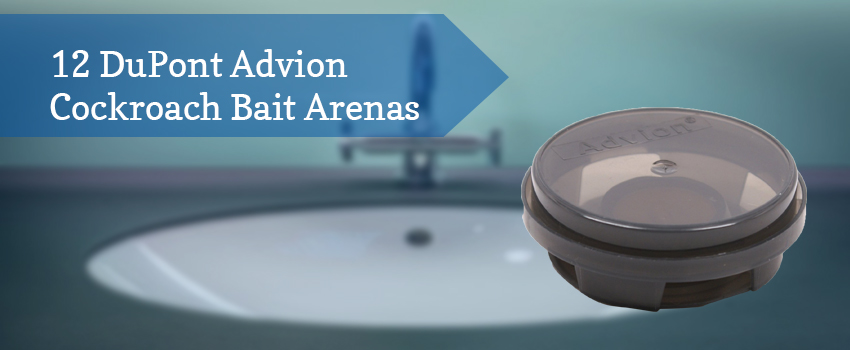
These bait arenas are a pet-safe product that will trap the cockroaches inside its dome-shaped enclosure. You can catch any species of cockroach using this product. It also hides the cockroaches from view, which makes clean up a lot easier for everyone, especially those who have a phobia on roaches and other insects.
Catchmaster Sticky Trap

These sticky traps aren’t only good for catching mosquitoes and flies. You can also use this sticky trap for the roaches in your house. It is non-toxic and easy to use. All you have to do is remove the back protector, stick it to your glass door or window, and then peel the front protector off. After that, you just have to wait for these pests to find your trap.
Chemical Roach Repellents
As mentioned earlier, chemical repellents are best to use when there’s a full-scale roach infestation problem in your home. It’s easier to diffuse and, therefore, will cover a wider area. However, it’s also not safe for humans to be in the property while it’s being fumigated. Without proper protective gear, chemical repellents will cause problems to your health.
However, there are also chemical repellents that can be used for small-scale extermination.
Advion’s Syngenta Cockroach Gel Bait
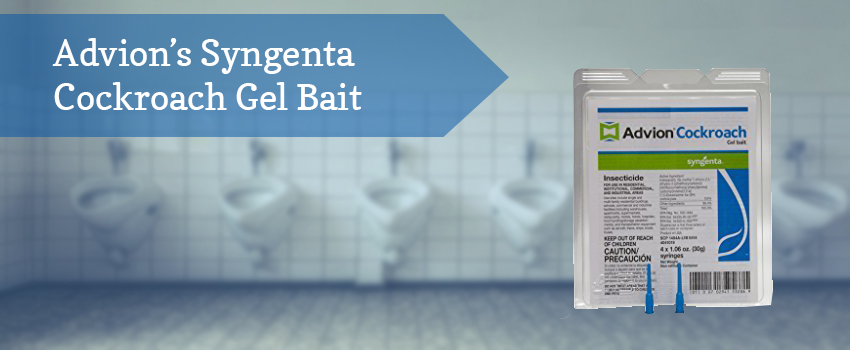
This gel bait is a potent chemical repellent that will give you professional results. It targets American, German and brown-banded cockroaches in particular.
Talstar Pro/One Multi-Use Pest Control Insecticide
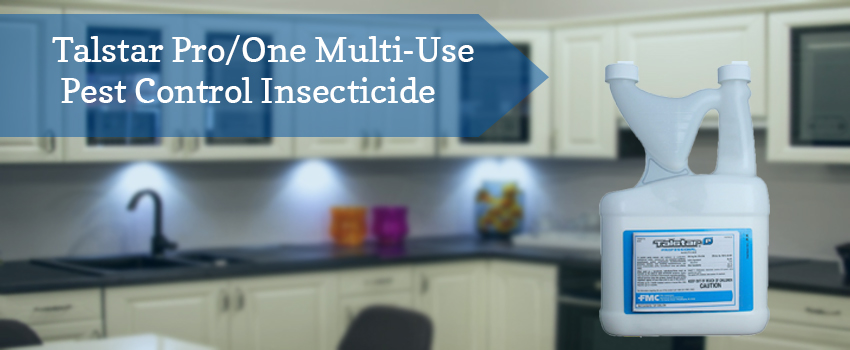
Talstar is used when there’s a wide infestation problem in your property. Professional bug exterminators use this product to exhume all pests from your home. If you are using this product for the first time, you might want to consult a professional before applying it. The good thing about this product is that it stays effective for 3 months after application. This gives the product plenty of time to properly and effectively disinfect your home.
Natural Roach Repellents
A natural roach repellent uses natural ingredients to get rid of roaches. It is the greenest choice of all the options in this guide. If you are concerned about environmental effects of chemical repellents and want to avoid the negative impact that they have on the planet, then you might want to try the following natural roach repellents.
Diatomaceous Earth

The diatomaceous earth, a type of mass made from tiny fossilized diatoms or aquatic animals that have been gathered from fresh water lakes, is the most popular natural roach repellent in the market.
At the same time, it is also the most effective. At contact, roaches will easily die within 48 hours. This material damages the exoskeleton of the roaches, which results to its dehydration and, ultimately, death. For a good natural repellent, use the Diatomaceous Earth Food Grade. It is safe for everyone and is effective in ridding roaches from your house.
Essential Oils
 Essential oils can also be a good solution for your roach problem. The most effective type of essential oil for this purpose is cypress and peppermint. They don’t produce the kind of strong smell that roaches like. To use as repellent, mix a couple of drops with a cup of water. Put the mixture in a spray bottle and apply in problem areas.
Essential oils can also be a good solution for your roach problem. The most effective type of essential oil for this purpose is cypress and peppermint. They don’t produce the kind of strong smell that roaches like. To use as repellent, mix a couple of drops with a cup of water. Put the mixture in a spray bottle and apply in problem areas.
You can also use mint and tea tree essential oils to remove roaches from your home. You can use the spray bottle method, or you can directly apply these essential oils to certain parts of your house. Place a couple of drops in a clean dishcloth, and then rub it inside cupboards, closets, pantries, and other small spaces.
Other Natural Options
 If the previous natural options did not work for you, here are a few other natural remedies that you can try.
If the previous natural options did not work for you, here are a few other natural remedies that you can try.
- Catnip. The Iowa State University conducted a study about the effectiveness of catnip as a natural pest repellent. They found out that it works to eliminate roaches in a specific area. You can rub catnip in problem areas around your house.
- Garlic. Garlic is also effective against cockroaches. You can crush a couple of cloves and mix them with water as a spray, or you can sprinkle garlic powder wherever roaches are nesting.
- Lemon. Cut the lemon in wedges and place them in cupboards, closets, and other areas within your house. Where there is lemon wedge, there won’t be a roach.
- Cucumber. A study discovered that cucumber gives cockroaches gas. Therefore, they avoid eating this plant at all times. If you want to disinfect areas of your house and remove the roaches, place a couple of cucumber slices in a container and leave the container where you think there are roach nests.

